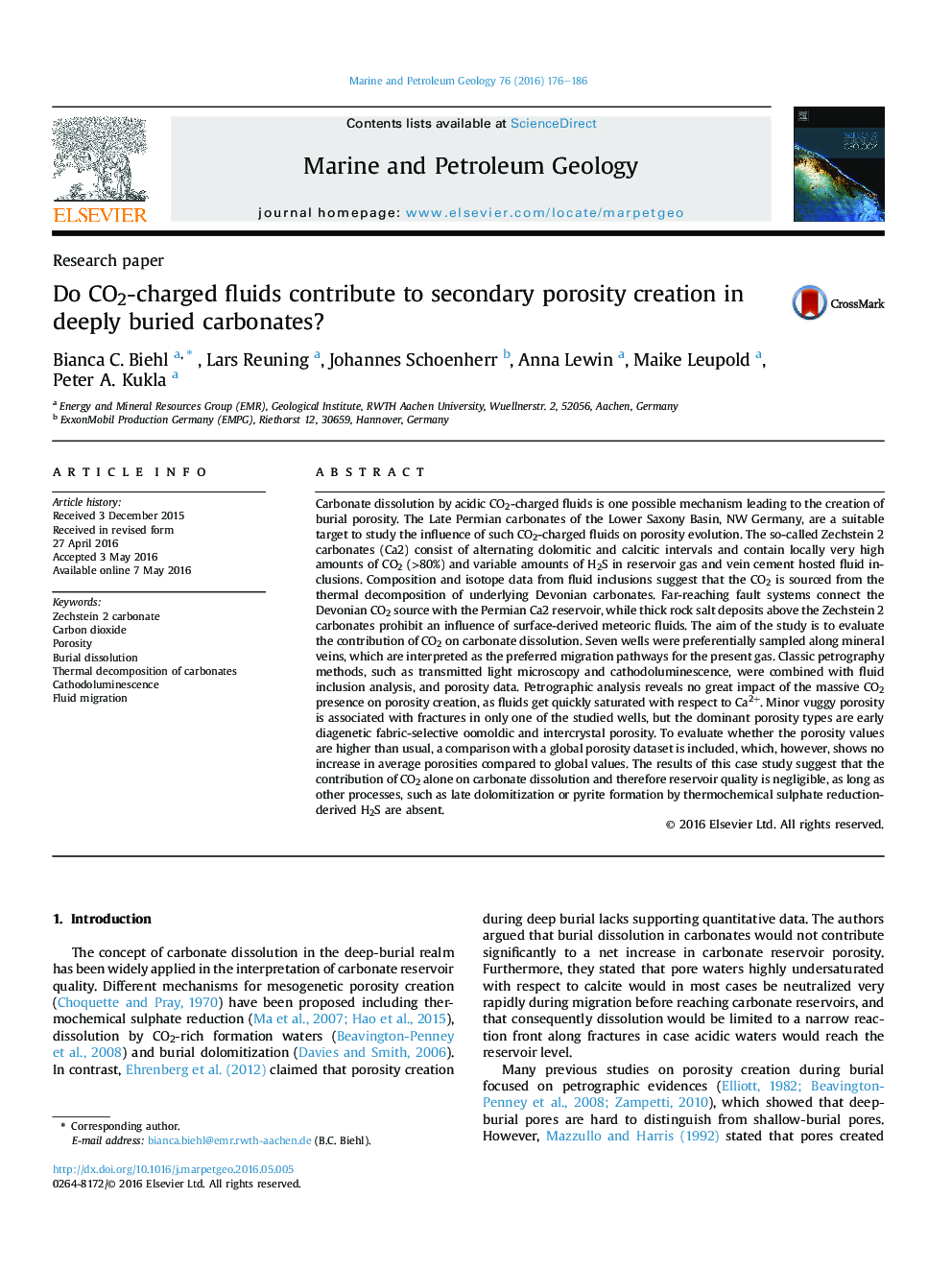| Article ID | Journal | Published Year | Pages | File Type |
|---|---|---|---|---|
| 6434725 | Marine and Petroleum Geology | 2016 | 11 Pages |
â¢Reservoir gases show CO2 contents up to 91% and fluid inclusions up to 100 mol%.â¢Deep-reaching fault system allowed ascend of CO2-rich fluids into Zechstein 2 rocks.â¢Contribution of CO2 on carbonate dissolution and reservoir quality is negligible.
Carbonate dissolution by acidic CO2-charged fluids is one possible mechanism leading to the creation of burial porosity. The Late Permian carbonates of the Lower Saxony Basin, NW Germany, are a suitable target to study the influence of such CO2-charged fluids on porosity evolution. The so-called Zechstein 2 carbonates (Ca2) consist of alternating dolomitic and calcitic intervals and contain locally very high amounts of CO2 (>80%) and variable amounts of H2S in reservoir gas and vein cement hosted fluid inclusions. Composition and isotope data from fluid inclusions suggest that the CO2 is sourced from the thermal decomposition of underlying Devonian carbonates. Far-reaching fault systems connect the Devonian CO2 source with the Permian Ca2 reservoir, while thick rock salt deposits above the Zechstein 2 carbonates prohibit an influence of surface-derived meteoric fluids. The aim of the study is to evaluate the contribution of CO2 on carbonate dissolution. Seven wells were preferentially sampled along mineral veins, which are interpreted as the preferred migration pathways for the present gas. Classic petrography methods, such as transmitted light microscopy and cathodoluminescence, were combined with fluid inclusion analysis, and porosity data. Petrographic analysis reveals no great impact of the massive CO2 presence on porosity creation, as fluids get quickly saturated with respect to Ca2+. Minor vuggy porosity is associated with fractures in only one of the studied wells, but the dominant porosity types are early diagenetic fabric-selective oomoldic and intercrystal porosity. To evaluate whether the porosity values are higher than usual, a comparison with a global porosity dataset is included, which, however, shows no increase in average porosities compared to global values. The results of this case study suggest that the contribution of CO2 alone on carbonate dissolution and therefore reservoir quality is negligible, as long as other processes, such as late dolomitization or pyrite formation by thermochemical sulphate reduction-derived H2S are absent.
